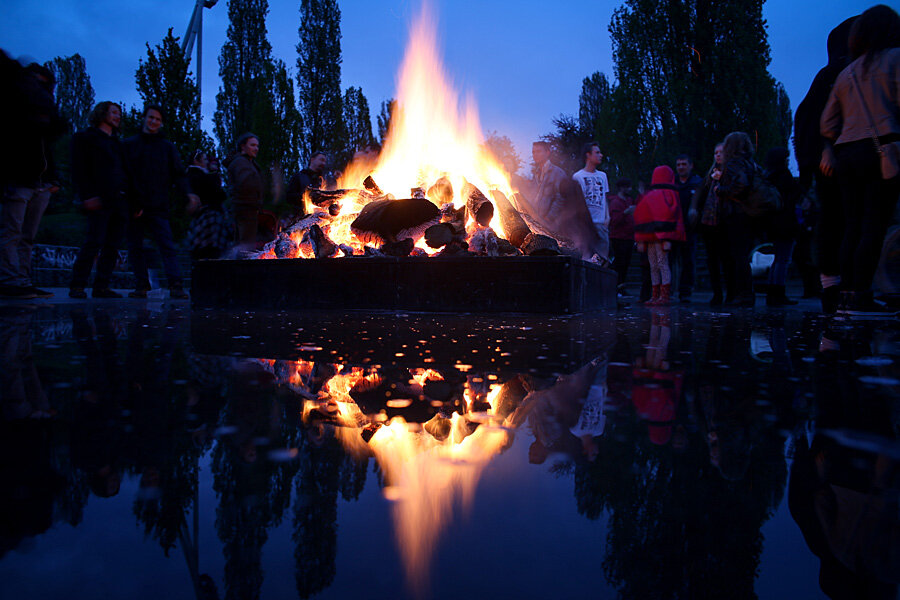Science reveals how to build the perfect fire
Loading...
From campfires made by our human ancestors to bonfires on the beach today, humans have tended to build fires relatively the same way for thousands, if not millions, of years.
“The question of when they controlled the fire ... is a very open question,” says Richard Wrangham, a professor of Biological Anthropology at Harvard University and author of "Catching Fire: How Cooking Made Us Human." “I have argued that it emerged almost 2 million years ago,” he says.
But have you ever thought about why we all build fires similarly? Adrian Bejan, a professor of Mechanical Engineering at Duke University, has a theory which is presented in the most recent edition of Nature Scientific Reports.
Bajan began by, “asking the question that hasn’t been asked: why do we make the fire always this way?” Personal experiences growing up in Romania as well as teaching students from around the world inspired his interest.
“I spent many days and nights fishing on the banks of the Danube [River] where fire is essential,” says Bejan. “It is amazing that what is in me is in everyone else.”
Provided that there is an ideal height as indicated by the “tall limit” (in which the fuel viscosity is oriented vertically), and an ideal width as indicated by the “shallow limit” (where the fuel viscosity is oriented horizontally), the intersection between the two computed asymptotes eliminates the extreme regions which create inefficient fires.
The body temperature of the burning structure decreases both when the structure gets taller, and when it becomes shallower, allowing the optimal use of fuel to occur when the height is comparable to the base.
Conclusion: the “ideal” fire is roughly the shape of an equilateral triangle.
This finding falls in the field between evolutionary biology and thermodynamics and is consistent with the principles established by Bejan’s earlier work in Constructal Law. This law postulates that all living systems are “flow systems” and within each system there is a principle of maximization of flow access which allows shapes to evolve and survive over time.
"The reason is that this shape is the most efficient for air and heat flow," said Bejan in a press release.
The fuel of the fire is porous, allowing heat to flow from one region of the fire to the next as a result of the buoyancy effect. This effect is the result of an upward force that displaces the weight of an immersed object. In this instance, the heat is the upward force and the cold air is displaced. The low density of the hot air inside the cone contrasts with the high density of the cold air outside of the cone structure.
The design that emerges is that the best shape for a fire is the same shape that humans have been building all along. “Evolution is the multitude of design ... not too much of this, not too much of that,” says Bejan.
But there is more to this theory than how to plan your next cookout. Bejan emphasizes that these findings play into the wider sphere of knowledge about human nature, evolution, and physics.
“The direction of evolutionary change is now known and is part of the laws of physics.”
Bejan’s work published a year ago on the evolution of airplanes is also part of the work he conducts on the self-described intersection between the human and the artificial worlds. He credits his education at MIT as building the foundation for his later work.
“The discovery plays into how the human mind has evolved with everything else,” says Bejan. “The big picture is that everyone is a thinker and trying to do better things … in the big picture everyone is trying to do better for the society around them.”








